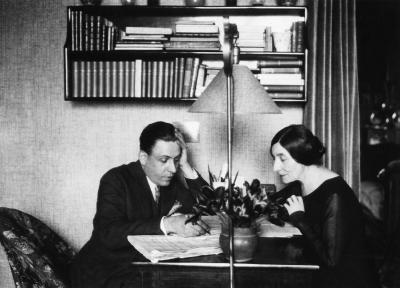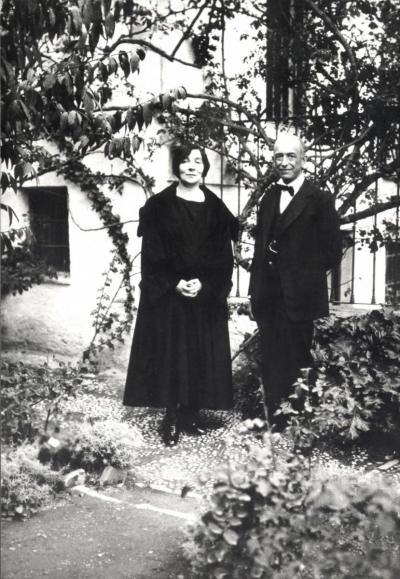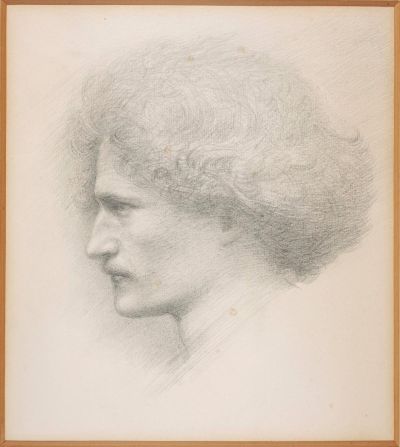Wanda Landowska
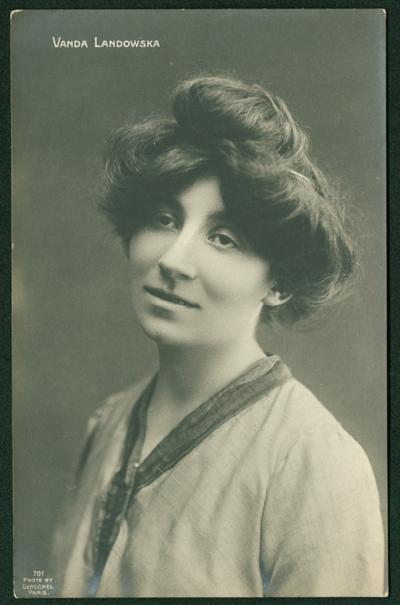
“A stir runs through the room; a dark haired, sharp featured, friendly-looking young lady appears, as lithe as Salome and as elegant as a marquess. She is the fairy godmother of early piano music, equally popular in Moscow, Berlin and Paris. A Polish citizen by birth, like many of her important compatriots she soon turned her back on her fatherland. For every artist it is good and healthy to nourish a great yearning. Poles do so by emigrating; they thereby develop a constant yearning for Poland for the rest of their lives. This was the case with Chopin, Paderewski, and also Wanda Landowska: as the interesting young lady was called.”
The Leipzig Zeitschrift für Instrumentenbau quoted from a report in the Kölnischen Zeitung, about a concert on early keyboard instruments in the Music History Museum of the Cologne sponsored by the entrepreneur Wilhelm Heyer and given on 15th March 1911. (see PDF) The audience heard music from the Renaissance, the baroque era and the romantic period, featuring compositions by Duke Moritz of Saxony (1521-1555), Couperin, Bach, Händel and Schubert on an 18th century “clavicymbel”, harpsichord and clavichord, on a fortepiano made in 1830 and a large three-manual spinet made in 1909 by the Leipzig instrument-maker Hermann Seyffarth. The only soloist of the evening was Wanda Landowska. When she was still quite young she had developed an interest for early music and historical keyboard instruments. Convinced that their sound, and not that of contemporary grand pianos, would provide the key to understanding the works of Johann Sebastian Bach, from 1903 onwards she only gave recitals on newly made harpsichords constructed by the Paris firm Pleyel & Cie, which specialised in pianos and harps whose sound and its effect on the listeners at first failed to impress her.
The Kölnische Zeitung continued: “Equipped with an unusual intelligence, she has discovered her own very personal field of activity in harpsichord playing, and is now transferring her established taste onto the music of early masters. […] And in doing so she has not only reshaped traditional music, but strived to reach its ideal perfection once again. That is her secret and her art. She has acquainted herself with keyboard mechanisms and practised with great patience and discipline until her fingers have been able to revive the ancient art of playing as it was in full force 200 years ago. And now she is exploring this fine old art on early instruments, and reproducing sounds that are certainly deceptively similar to those conceived by the early masters.” The Zeitschrift für Instrumentenbau summarised her recital in the Music History Museum[1] as follows: “The effect on the compositions played on the instruments made by Kirkman, Lemme and Streicher was truly astonishing, whereas reproducing Händel and Bach on the Silbermann clavicymbel and the newly-made Seyffarth spinett was a wondrous experience. The Moonlight Sonata, an encore on Streicher’s fortepiano, had an incomparable appeal. The way in which Landowska performed it on the old keyboard instrument, had never before been heard.”
[1] The paper manufacturer Wilhelm Heyer’s (1849-1913) collection at the Music History Museum was acquired by the University of Leipzig in 1926 and is now housed in the Grassi Museum of Musical Instruments at the University of Leipzig
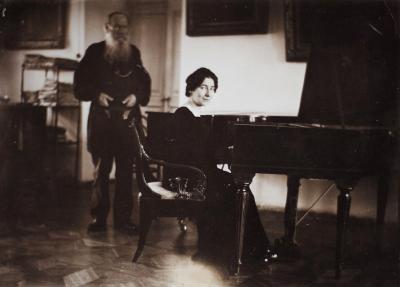
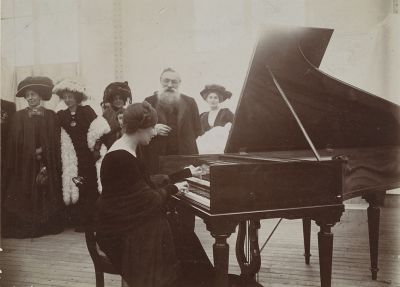

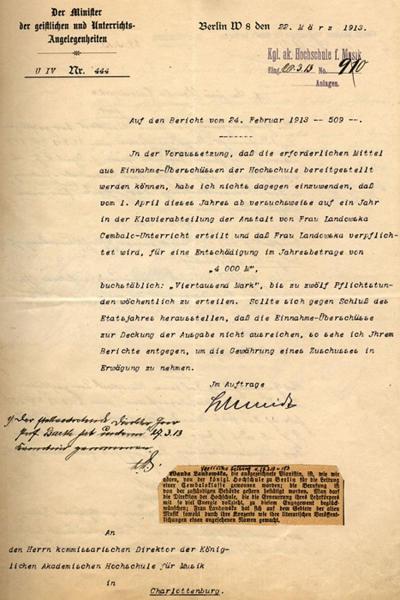
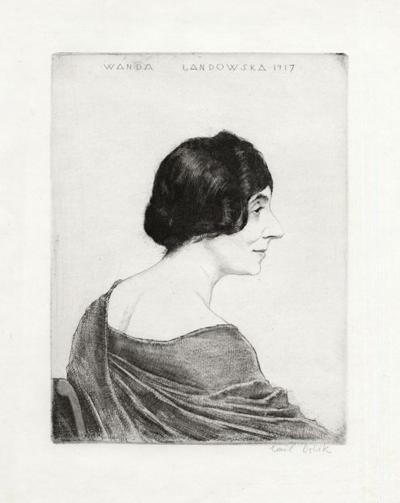
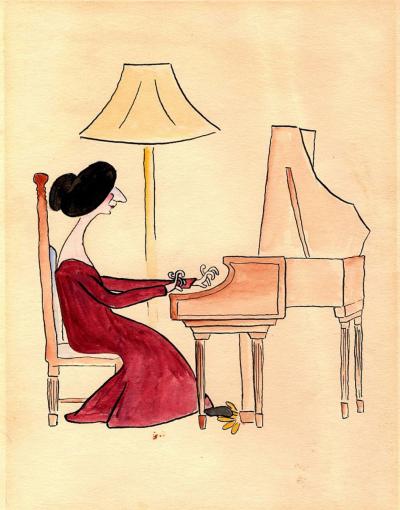
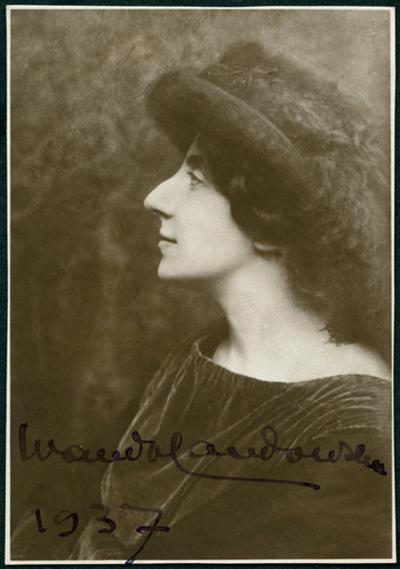
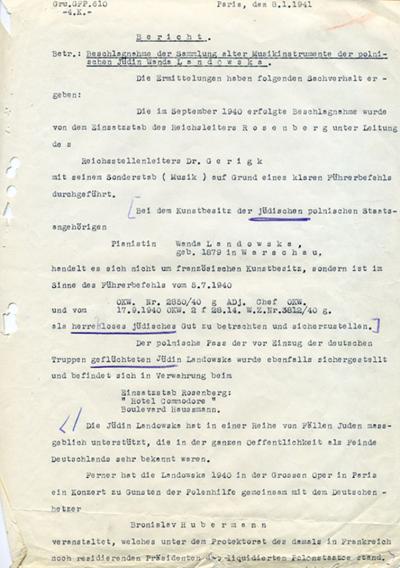
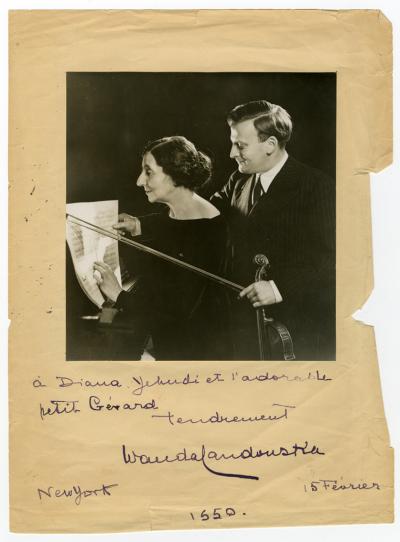
![„Erinnerungen an Wanda Landowska” [‘Memories of Wanda Landowska’] „Erinnerungen an Wanda Landowska” [‘Memories of Wanda Landowska’] - Poster for the exhibition in the Bachhaus Eisenach, 05/01-11/13/2011.](/sites/default/files/styles/width_100_tiles/public/assets/images/plakat_bachhaus_eisenach_2011.jpg?itok=76h6jPXt)




